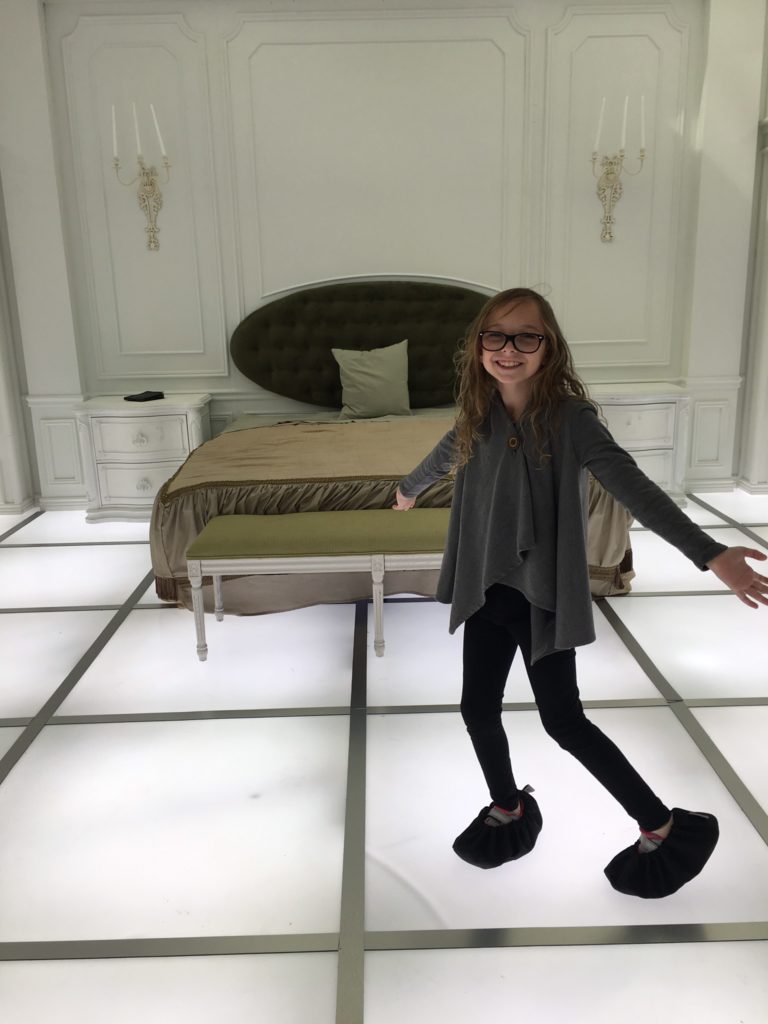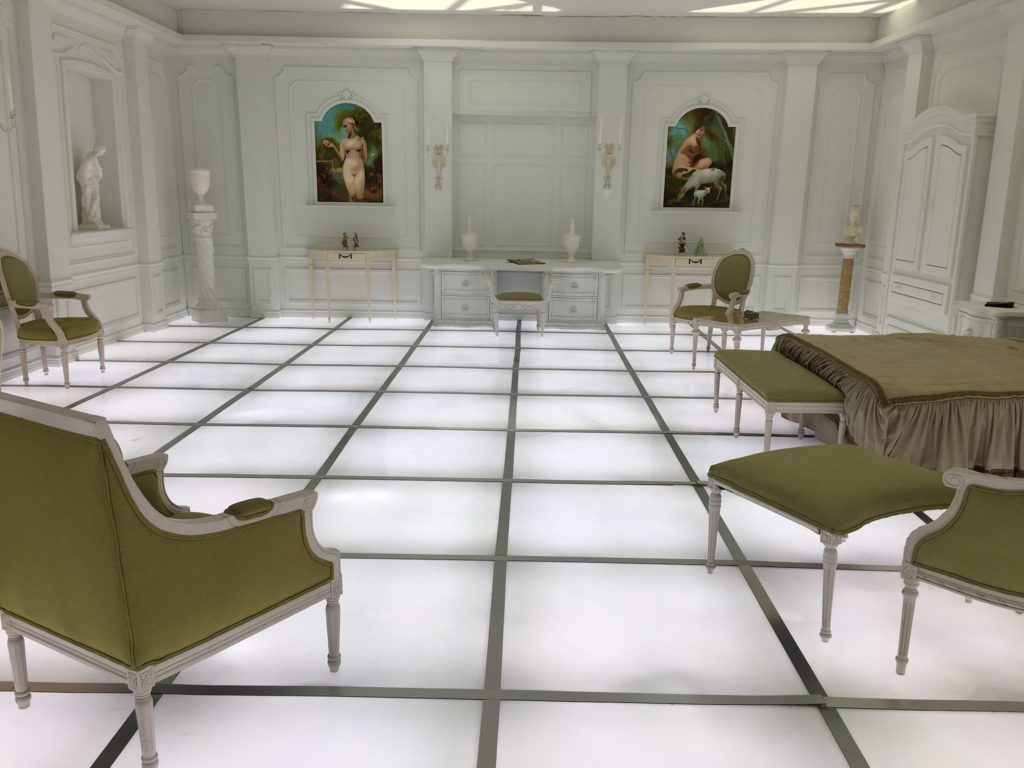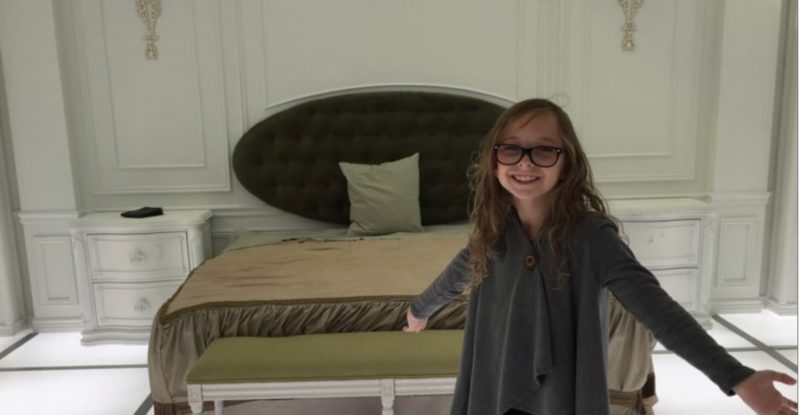I was only eight years old when I saw Stanley Kubrick’s mind-bending masterpiece 2001: A Space Odyssey for the first time. And though I didn’t even begin to understand what it was all about until I was a teenager, the experience forever broadened my tweenage existence. Giant black monoliths, murderous apes, a killer computer with one giant red eye, astronauts tumbling through space and reemerging as old men and giant, star baby embryos? Seriously, what’s not to love?
So, when I found out that our first family trip to Washington DC was overlapping with the Smithsonian’s National Air and Space Museum’s (NASM) unveiling of a totally immersive, life-size recreation of one of the most iconic sets from 2001 in honor of the film’s 50th anniversary, I knew the time had finally come for my nine-year-old daughter, Greta, to see the film.
Now, as the daughter of a screenwriter/film critic and a library geek, Greta has seen her fair share of fairly challenging films – The Florida Project and All the Money in the World were two of her recent favorites – but 2001 was something else entirely. While she found some of the music to be a bit loud and off-putting, she fell in love with the film the minute the pre-historic apes appeared onscreen.
But what was really interesting was the stuff Greta noticed that I had never even thought about before, like, for instance, the sheer volume of women in powerful roles in space.
Not including the female cabin crew on Dr. Floyd’s Pan Am spaceplane to Clavius Base, Greta counted five female “scientist types” in the film, three of whom chat with Floyd on the space station and two more who are important enough to warrant seats at the u-shaped table during Floyd’s top-secret briefing about the discovery of a monolith on the moon. It doesn’t exactly pass the Bechdel test, which calls attention to gender inequality in fiction by asking whether it features at least two women who talk about something other than a man and doles out bonus points if the women have, you know, actual names and stuff. But hey, it’s a start, especially for a filmmaker like Kubrick. And, as Greta pointed out, it must have seemed downright radical to imagine that women would have a seat “at the table” in space at all in 1968. So, good catch, kid.
My daughter was also very impressed by the visual effects throughout and, ironically enough, the humanity of the movie’s main antagonist, HAL. “So, he’s like an anti-hero, right, Dad?” she asked.
Though the film’s headier subtext about man’s relationship with technology may still be a bit mature for her, Greta did tell her friend before we left town that the movie was unlike anything she had ever seen before, which is just about the truest thing anyone has ever said about 2001: A Space Odyssey.
So, when I told her that we were going to be able to actually walk into a life-size recreation of astronaut Dave Bowman’s bright white neoclassical hotel room from the film, Greta went through the roof. The fact that museum visitors are only allowed to enter the installation in small groups of six and stay for only two minutes also lent an air of mystery and specialness to it all. But Greta was probably most excited about the fact that visitors are required to wear special coverings for their shoes so as not to damage the installation’s translucent, light box-like floor.

A glimpse into astronaut Dave Bowman’s hotel room. Image: Tomás Romero
Launched during NASM’s annual Yuri’s Night celebration – a series of worldwide “Space Parties” held each April in honor of Russian cosmonaut Yuri Gagarin, the first human in space – on 7 April, the installation, entitled “The Barmecide Feast,” is the brainchild of Hong Kong-based, UK-born artist Simon Birch, and was built with the assistance of architect Paul Kember, the nephew of two of the talented draftsmen who built the original set for the film.
The installation represents beautifully in pictures online. But nothing could really prepare Greta and myself for the experience of actually walking into a scene from a movie we had watched two days prior. It was breathtaking and totally surreal, but sadly, it was also very rushed. The surly young man who took our tickets actually set a timer when we entered, so, when NASM says two minutes, they mean two minutes. But, man, what a wondrous one-hundred-and-twenty seconds it was.
At first Greta and I were disappointed that we weren’t allowed to sit down on the beautifully crafted chairs and that groovy green bed or touch anything in the room, but afterwards it occurred to us that adding touch to the experience might have ruined the spell somehow. So, at the end of the day we were content with simply existing in this bright, magical space together as father and daughter in matching shoe booties. And like the iconic scene in the film, it was all over in a flash. You know, kinda like childhood.

Inside NASM’s The Barmecide Feast. Image: Tomás Romero
The centerpiece of NASM’s continuing celebration of the 50th anniversary of 2001’s premiere at Washington DC’s Uptown Theatre on 2 April 1968, “The Barmecide Feast” is on display in the museum’s aviation wing until 28 May. While access to the installation is free, timed tickets are definitely required. For more information, click here: http://www.trumba.com/calendars/2001-SpaceOdyssey
Related Articles:
- Hidden Figures shines a bright light on NASA’s unsung heroes
- Boeing’s Rachelle Ornan-Stone: from Space Camp to Starliner
- Mars One semi-finalist Laura Smith-Velazquez reaches for the stars
- Mars One semi-finalist opens up about male-dominated industry
- NASA seeks to spark more interest from women, minorities














